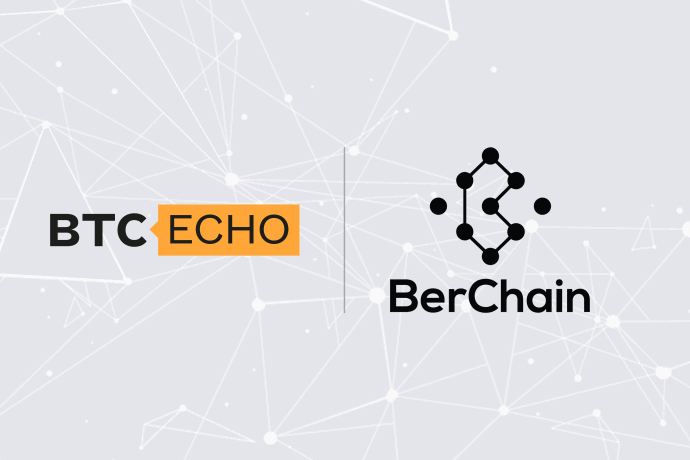
How blockchain revolutionizes carbon emissions tracking across global supply chains
Carbon emissions and their impact on climate are one of the main challenges for achieving environmental sustainability. Carbon footprint, as a sustainability indicator, has been frequently studied to quantify the environmental performance of a product, individual, company, city, or country, using environmental life-cycle assessment (LCA). Different approaches have been developed to assess the environmental impacts of goods throughout their whole life cycle and supply chain.
While everyone races to zero carbon emissions, the key focus for a product’s life cycle in the years ahead will be to assess if a product is truly sustainable. As governments target decarbonization, promoting transparency will be a key tactic in ensuring entities across the globe meet new emissions standards and that blockchain already plays a big role in this. We spoke to Gunther Walden, CEO, and Co-Founder of CircularTree GmbH who is synchronizing supply chain compliance management through blockchain technology.
Hi Gunther, thank you for this interview. Tell us a bit more about CircularTree.
We founded CircularTree in 2018 to use Blockchain technology to develop solutions to track social and environmental information through the supply chain. Our goal is to make it easier for companies to achieve their sustainability targets.
Since the Paris Agreement, a lower carbon footprint is becoming increasingly important. CarbonBlock is one of your projects and has been presented and received the innovation award from STARTUP AUTOBAHN Expo 8. Would you tell us a bit more about how it works?
Many companies, especially the ones with a strong brand name, have set themselves targets by when they want to be carbon neutral. However, this does not mean that their products are carbon neutral. A study by the Carbon Disclosure Project has revealed that on average 80% of the product’s carbon footprint comes through the supply chain.
With CarbonBlock we are measuring the real product carbon footprint at every level in the supply chain. Let’s take a look at the supply chain we had in our STARTUP AUTOBAHN project: BASF is providing the granulate and provides the material carbon footprint per kilogram to CarbonBlock. Motherson reads this value, multiplies it with the amount they need to make one bumper and add the emissions for the production of one bumper, and writes the bumper carbon footprint to CarbonBlock. Porsche then would read the value for the bumper and use it for their calculation for the carbon footprint of a Taycan. Once you have achieved transparency about real carbon footprint values, you can take action, e. g. agree with your supplier on yearly reduction targets or compare different suppliers for a given product.
Do you think that overall is it enough to just look at the emissions of a good or service that a company sells to the end customer to have a greener solution for our planet or are there other factors at work?
In the future, we definitely will have to widen our scope towards a Product Environmental Footprint (PEF) which e. g. also includes water usage and waste. And on the other side, it is a big step in the right direction. However, in the future, we will have to widen our scope towards a Product Environmental Footprint (PEF) which e. g. also includes water usage and waste. And on the other side, the product carbon footprint only covers the making part. But many products, e. g. have a high carbon footprint in the use phase and you need to also have a look at the carbon footprint of the recycling phase.
CarbonBlock enables all participants to share actual carbon footprint information in the supply chain. This is effective from a transparency point of view. What about traceability then?
Traceability is a must if you need information, e. g. working conditions from different actors in your supply chain. If you have a product carbon footprint value the added benefit of traceability is limited and outweighed by the concerns in most companies about sharing very sensitive information.
When thinking about blockchain, carbon neutrality is not the first thing that comes to mind. Bitcoin, blockchain’s first application, is widely known as an environmental polluter, consuming massive amounts of energy and emitting vast amounts of CO₂ to validate transactions and sustain the network. Which network architecture and choice of protocols are you using to make sure that it functions in more energy-efficient ways?
The problem is that Bitcoin uses a proof-of-work consensus algorithm that requires a huge amount of electric power to validate the blocks. We use Hyperledger Fabric with a proof-of-authority algorithm, it is fast and energy-efficient.
CircularTree has also been invited to join the World Business Council for Sustainable Development SOS 1.5 project. Where do you see the benefit of this project?
This project follows the same targets as CarbonBlock and it provides us the opportunity to test our solution with a Fast Moving Consumer Goods supply chain. Furthermore, we are jointly working on open standards and a network of networks for emission data exchange that enables diverse stakeholders to participate in an open, interoperable environment using a variety of technology solutions.
Coming back to traceability, it allows us to measure more precisely the impact of carbon footprint and not only that, since it could also be tracing the impact of other polluting agents, at each stage of the supply chain. CircularTree has another ongoing project which is SustainBlock. Can you tell us more about it?
SustainBlock is a blockchain-based project to demonstrate the presence of artisanal and small-scale mining (ASM) mine sites in the supply chain of mineral and metal end-users, and in turn, provide downstream companies with access to information on the provenance of minerals contained in their products.
Do you think that consumers will increase their awareness and therefore due diligence, thanks to such projects in the next years?
We believe that consumer awareness in regards to social and environmental aspects is constantly increasing, already and projects like ours are supporting companies to efficiently provide this information.

Gunther Walden
Co-founder & CEO
Gunther held several Senior Management positions at Siemens in Germany and the United States. He has more than 25 years of experience in supply chain and process automation. He is also a visiting lecturer and serves on start-up Advisory Boards.





